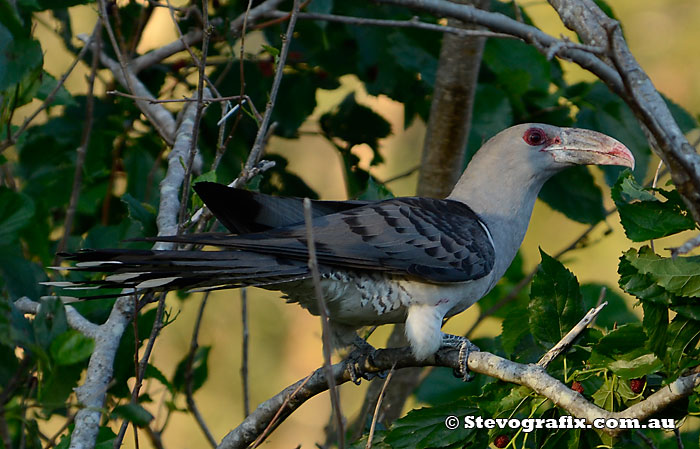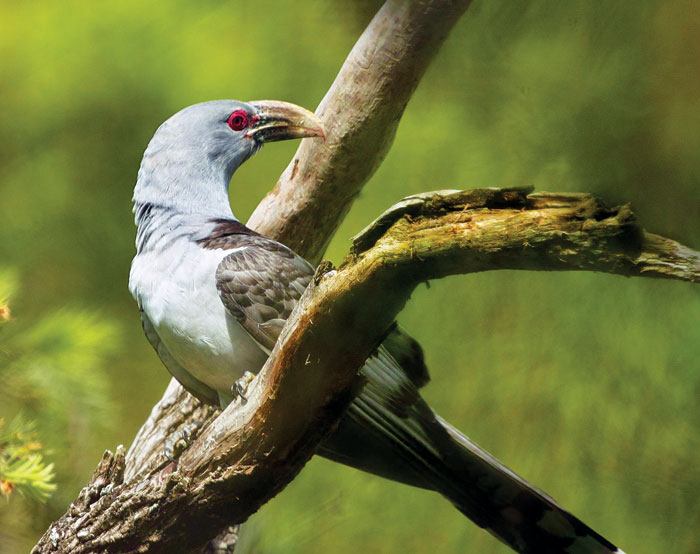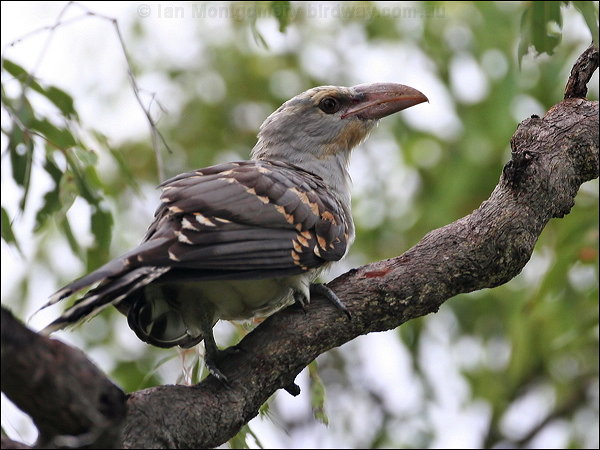
Scythrops novaehollandiae
SUBFAMILY
Cuculinae
TAXONOMY
Scythrops novaehollandiae Latham, 1790, New South Wales.
Monotypic.
OTHER COMMON NAMES
French: Coucou prйsageur; German: Fratzenkuckuck; Spanish:
Cuco Tucбn.
PHYSICAL CHARACTERISTICS
23.6 in (60 cm), 1.24 lb (623 g). Gray with black spots above,
tail with subterminal black band and white tip, light gray below,
huge bill, dark and pale gray. Bare skin around eye red, iris red.
DISTRIBUTION
Sulawesi, Buru, Flores, north and east Australia. Winters in
Moluccas, Lesser Sundas, Aru, New Guinea, and Bismarck
Archipelago
HABITAT
Edge of forests or along rivers, mangroves, and lowlands.
BEHAVIOR
Migratory and seasonal in Australia. The voice is a loud “gaak”
rapidly repeated. Males feed females before copulating.
FEEDING ECOLOGY AND DIET
Fruit and insects.
REPRODUCTIVE BIOLOGY
Brood parasitic; crows and other corvids as hosts, also Australian
magpies and magpie larks. Unknown if eviction occurs,
but host chicks sometimes disappear from the nest.
CONSERVATION STATUS
Not globally threatened, uncommon in much of its range.
SIGNIFICANCE TO HUMANS
None known.
Photo Gallery of - Channel-billed cuckoo




 Animalia Life
Animalia Life